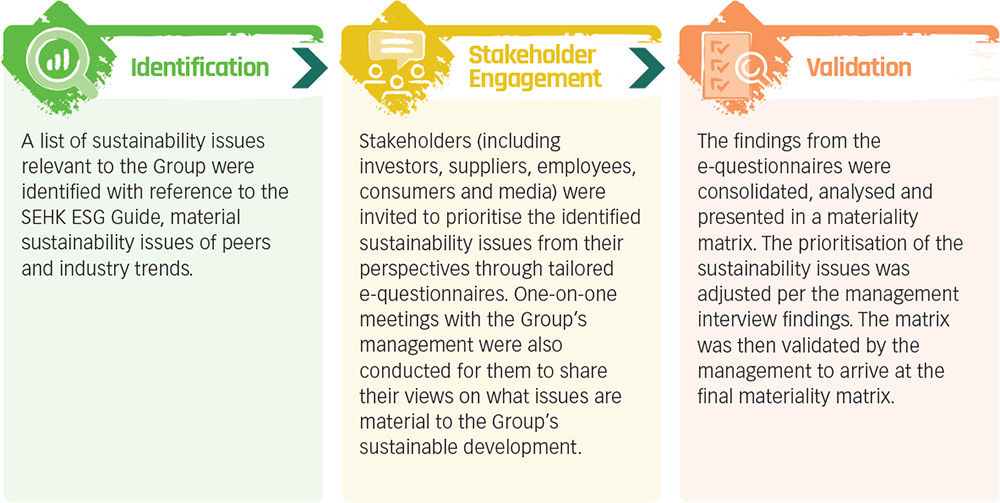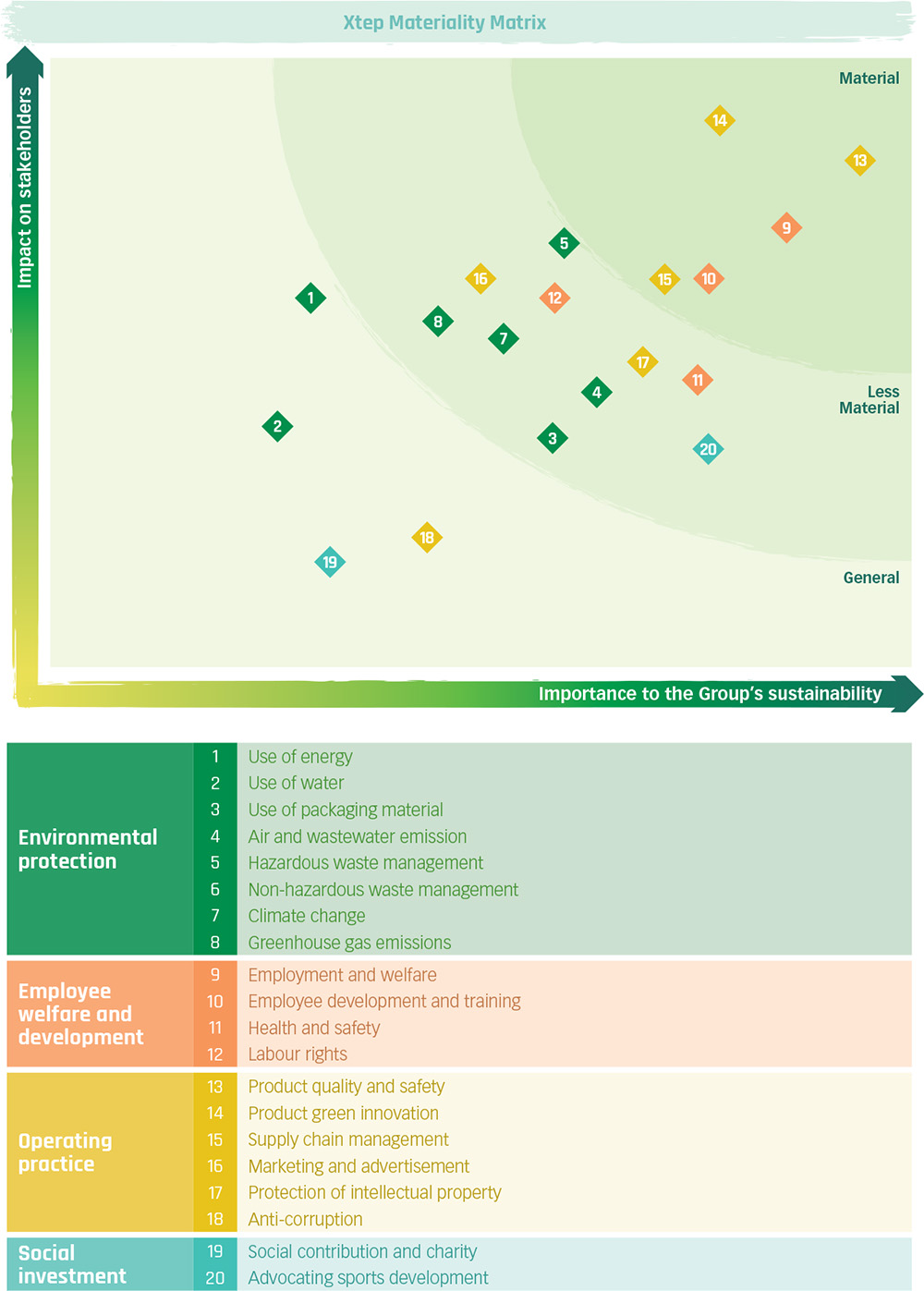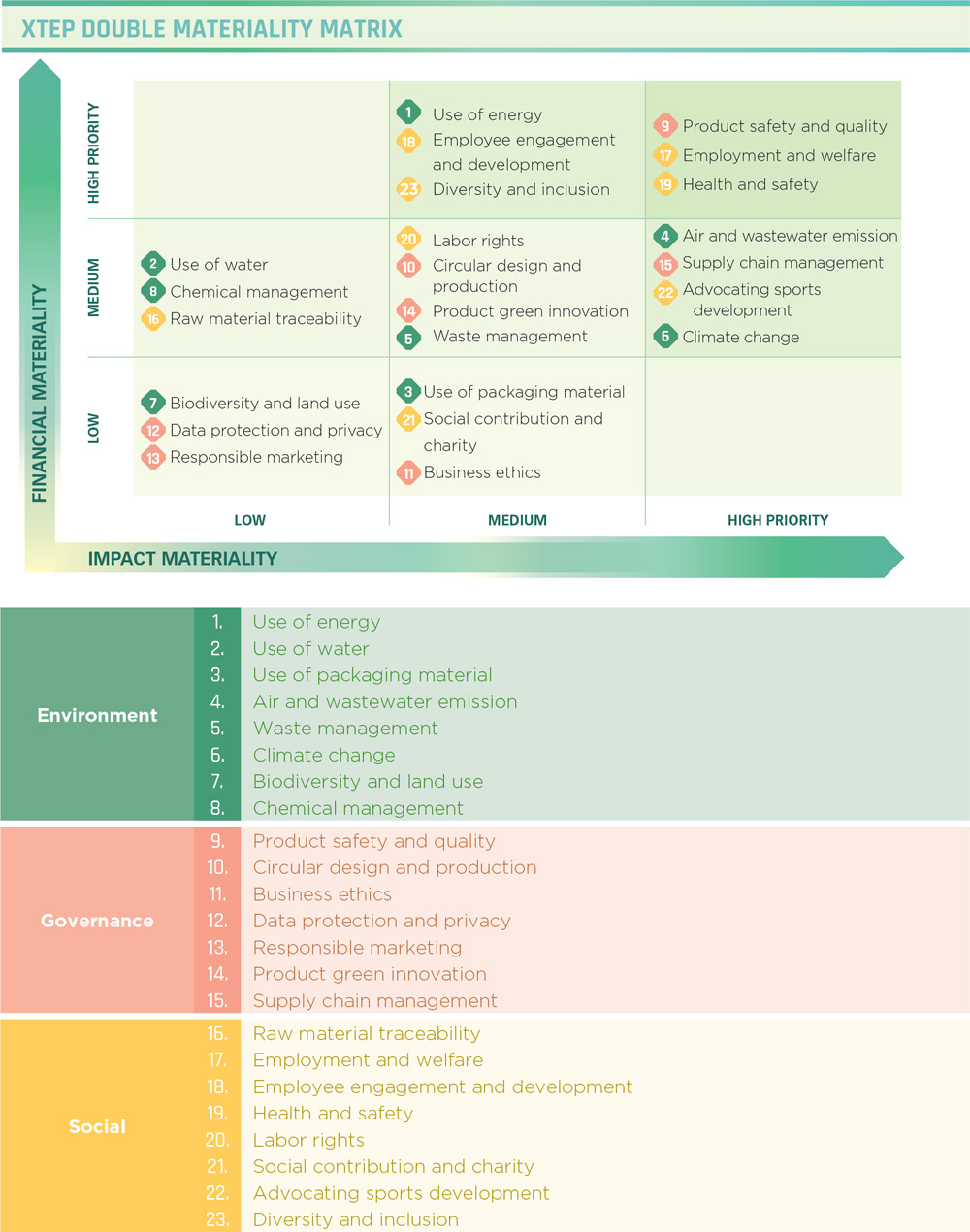Sustainability
Stakeholder Engagement and Materiality Assessment
The Group places great emphasis on identifying and managing our material topics, as they are fundamental to informing our ESG management and approaches. As such, we actively engage with our key stakeholders to understand their views on different issues and respond to their feedback and expectations.
During the year, the Group conducted our first double materiality assessment to help us recognize risks and opportunities that are significant from both a financial and non-financial standpoint, hence supporting the development of our ESG targets. The exercise enabled the enhancement of report disclosures to focus on topics that are the most material to the Group and our stakeholders, as well as allocating resources in prioritized areas to drive our sustainability processes.
Stakeholder Engagement
Understanding the views and interests of our internal and external stakeholders is fundamental to developing the Group’s sustainability strategies. Xtep places a high priority on our stakeholders, actively seeking to understand and listen to their expectations regarding our ESG management strategies and practices.
Based on our unique business activities and operations, as well as insights from global industry peers, we have identified eight major stakeholders and established communication methods tailored to address the concerns of each stakeholder group. The following table provides a summary of the key stakeholder groups that we have identified and the communication channels we employ to engage with them:


Double Materiality Assessment
During the year, the Group followed the materiality assessment principles outlined in HKEX ESG Code and Sustainability Accounting Standards Board (“SASB”) standards and conducted a double materiality assessment that considered financial and impact materiality. The assessment process involves assessing the sustainability impact of our actions on the broader world and understanding how sustainability-related issues may influence our business performance. It also examines how these factors could shape our future strategic direction.
The double materiality assessment evaluates impact materiality, which assesses the Group’s impacts on the economy, environment and society, and financial materiality, which assesses ESG topics that could create or erode our enterprise value. The process of the assessment consists of five stages and is summarized as follows:

Materiality topics
Through extensive engagement with our internal and external stakeholders, supported by research and expert interviews, we have identified 23 material issues relevant to Xtep’s business and sustainable development. The material issues we have identified are aligned with our current ESG strategies and targets, further validating that we are focusing on the right areas.
The results revealed that social-related issues were considered more material than environmental, and the top three highest-ranking issues are product quality and safety, employment and welfare and health and safety.
While environmental issues were ranked lower in the assessment, we recognize that environmental issues represent an emerging area of focus for the sportswear industry. As consumer and societal expectations evolve, we acknowledge that maintaining a healthy environment is integral to long-term business success and serving community needs. We will continue progressing in our approach and enhancing transparency in this area.
The double materiality matrix below summarizes the relative importance of the 23 material issues by their financial materiality (Y-axis) and impact materiality (X-axis).





